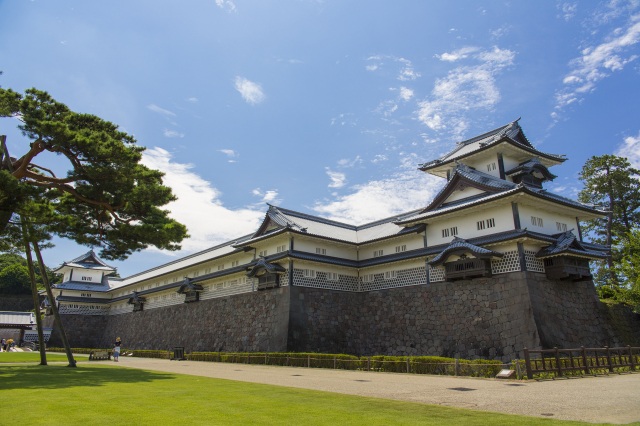The Lifestyle of the Samurai and their Lords
Discover the Nagamachi District, the neighbourhood of feudal samurai residences and the political and military centre of the lords of the Kaga DomainOver several centuries the samurai and their lords were shaping the Kanazawa City culture through art, crafts and architecture.
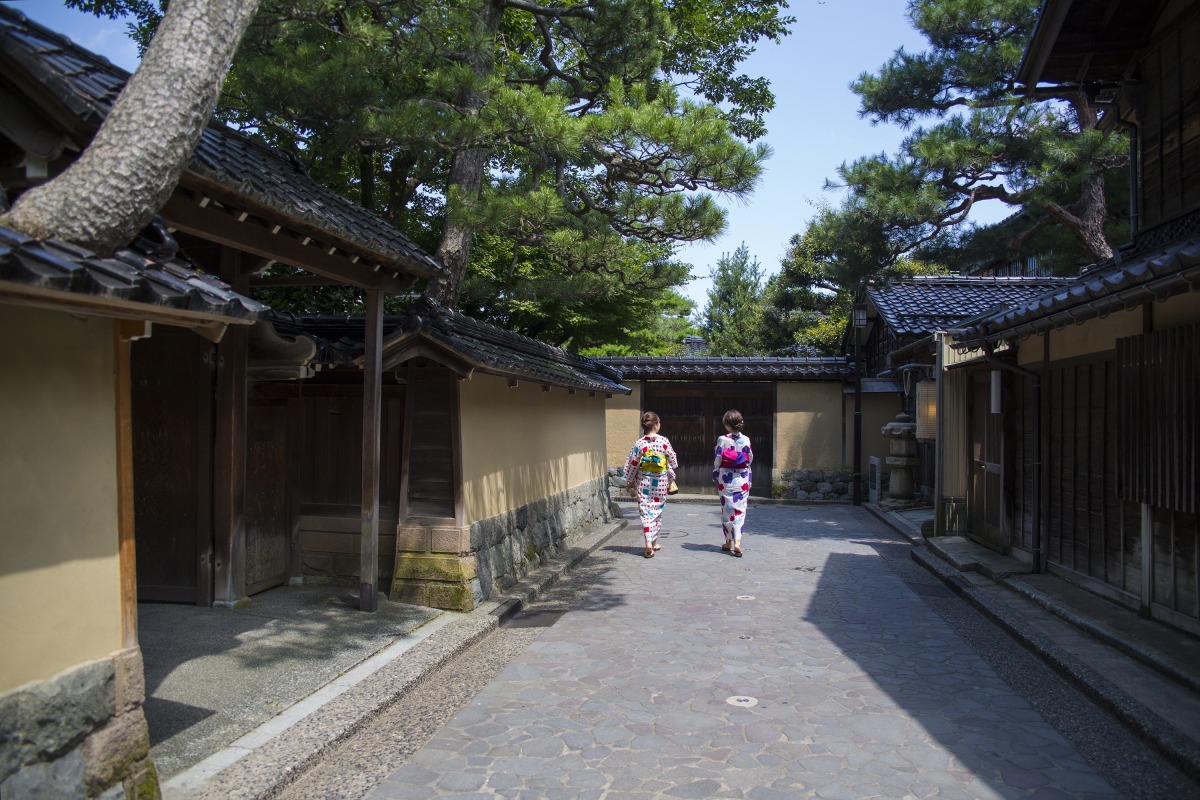
Nagamachi District
A stunningly preserved samurai district in the center of Kanazawa
Kanazawa was once the economic and administrative center of the Kaga Domain (feudal-era Ishikawa Prefecture). Over the course of the Edo period, it grew rapidly – its population growing to over 100,000 – transforming it into one of the largest castle towns in feudal Japan. Its population rivaled that of Rome and Madrid at the time.
With the castle at its center, the town was designed with both its defensive and economic aspects in mind. Members of the upper classes were often given allotments of land for their residences close to that of the feudal lord (daimyo) in the castle, while commoners lived near the town’s edges.
Nagamachi Samurai District, located near the center of town, was where the middle to high-ranking samurais lived – which is why it’s sometimes described as the city’s samurai district. Nagamachi literally means “Long Town,” though it’s more likely that it actually takes its name from the surname of a local family, the Cho, which means “long” which can also be pronounced “naga.”
Nagamachi Samurai District’s historical value lies in its unusual state of preservation. It has escaped large-scale fires, including the firebombing that damaged other large cities such as Tokyo and Osaka during World War II. Accordingly, it retains many features from the Edo period: narrow streets, a drainage and water supply system that remains in use, and restored samurai houses.
Many of these residences maintain their original earthen walls (tsuchi-kabe), which are still covered in the winter with straw mats to protect them from frost and subsequent cracking. A walk through Nagamachi, where an Edo-period atmosphere still lingers, offers a glimpse into the heritage of Kanazawa and Japan.
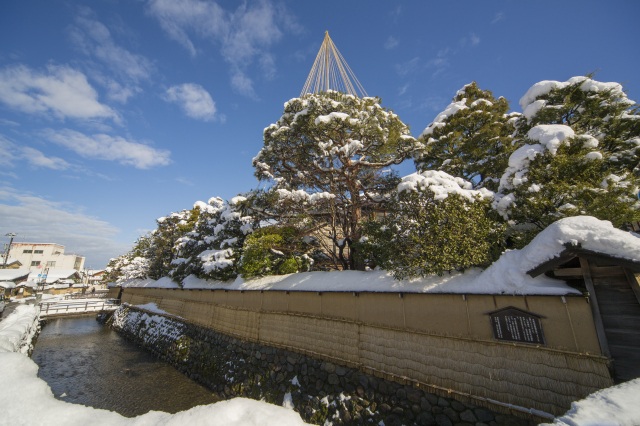
Nomura Samurai Family Residence
The remains of the Nomura family are also open to public. The family successively held executive posts from generation to generation under rule of the Maeda family.
The house has a coffered ceiling totally made of Japanese cypress and fusuma-e (paintings on sliding-door panels) created by the Maeda family's personal painter. The garden inside the residence has a Japanese bayberry over 400 years old and a meandering stream surrounded by ancient and strangely shaped rocks.
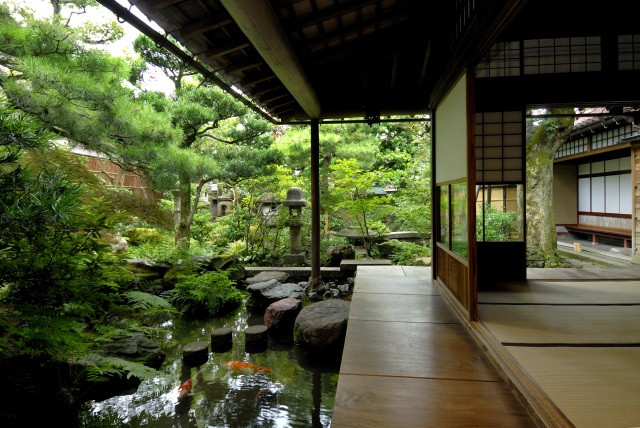
Takada Family Samurai House Remains
Walking along the channel that flows through Nagamachi, one comes to a crossroads called Yon-no-hashi (“Fourth Bridge”), where stands the surviving structure of the Takada Family Samurai House Remains. Here, an original samurai residence has been restored and opened to the public so that visitors can peek into the inner life of a samurai of the Kaga domain (feudal-era Ishikawa, centered on Kanazawa).
The Takada family were samurai of middle rank or heishi. They lived in the area designated for those of their status. Today, the house occupies a plot of roughly 890 square meters, but once it exceeded 1400 square meters. The nagaya-mon (“longhouse gate”) of the residence has been restored, and inside are exhibits relating to the servants who worked in the samurai household.
The beautiful Japanese stroll garden has also been restored. At the center of the garden is a pond that draws its water from the canal, and Japanese red pine trees are artfully arranged around it. The garden’s grounds have been designed for a leisurely walk.
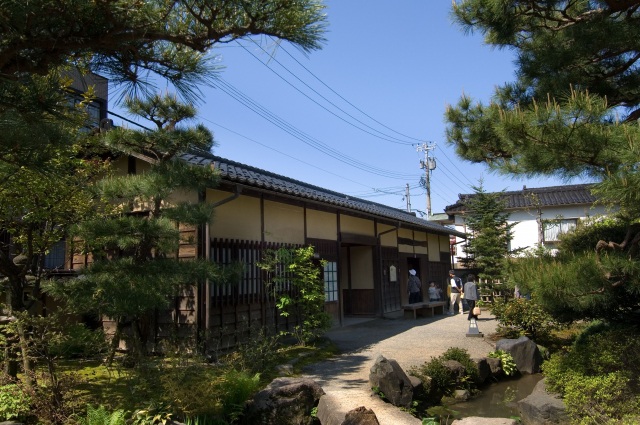
Ashigaru Museum (Low-rank Samurai Houses)
A glimpse into the life of a low-ranking samurai
At the Kanazawa City Ashigaru Museum (Low-rank Samurai Houses) , feudal-era Japan comes to life once more.
In the feudal era, the size and design of homes were determined by a family’s class and rank. Many houses visible in Nagamachi—with their earthen walls lining the streets, private entrance gates, and gardens just beyond—were the residences of middle-ranking samurai. Those of lower rank, on the other hand, had houses surrounded by hedges, which also enclosed gardens. Visitors can see such a structure in the Kanazawa City Ashigaru Museum (Low-rank Samurai Houses).
Preserved at this museum are two of the oldest surviving examples of ashigaru housing. Ashigaru were foot soldiers in feudal Japan. During the Sengoku (“Warring States”) and the Momoyama periods from approximately 1467 to 1600, they made up battalions of archers and gunmen; but in the Kaga domain (feudal-era Ishikawa centered on Kanazawa) during the Edo period (1603–1867), they were designated the lowest rank of the samurai class.
Displayed in the museum are the Takanishi Family House and the Shimizu Family House, two ashigaru residences. Visitors can walk through these historical homes to learn more about ashigaru housing, life, and society.
Takanishi Family House
In the Edo period (1603–1867), ashigaru (foot soldiers, the lowest rank of samurai) often lived in continuous rows of tenement housing called nagaya (literally “longhouses”). In the prosperous Kaga domain (feudal-era Ishikawa centered on Kanazawa), however, ashigaru were allotted detached houses with gardens. This unusual incentive, along with Kaga’s economic opportunities, is thought to have made the domain attractive to ashigaru. The Takanishi Family House, along with the Shimizu Family House next door, is one of the oldest remaining detached houses for ashigaru in Kanazawa. Descendants of the original ashigaru owners lived in the house until 1994, when it was dismantled and moved here to become part of the Kanazawa City Ashigaru Museum. Previously, the residence was located in the district designated for “fast feet” (hikyaku). Hikyaku were couriers known for their speed and unique running style; they delivered anything from correspondence and goods to money orders. In the relatively peaceful Edo period, hiyaku was the primary occupation of many ashigaru.
Inside the Takanishi Family House, visitors can learn more about ashigaru organizations, life, residential areas, and housing. The Shimizu Family House next door introduces everyday life and activities.
Shimizu Family House
During the Edo period (1603–1867), ashigaru (foot soldiers) typically lived in long ranges of tenement housing called nagaya. They had little choice but to endure cramped living conditions. When compared to this standard that existed throughout the country, however, ashigaru in the Kaga domain (feudal-era Ishikawa centered on Kanazawa) enjoyed more comfortable quarters: each family was given a completely detached house with its own garden.
The Shimizu Family House, like the Takanishi Family House next door, is one of the oldest remaining ashigaru houses in Kanazawa. It was moved to this location in the 1990s to become a part of the Kanazawa City Ashigaru Museum. Until it was moved, descendants of the original ashigaru owners continued to live there. Its previous location was in the residential district assigned to ashigaru that served as “fast feet” (hikyaku). Hikyaku were couriers known for their speed and unique running style.
The Shimizu Family House is an excellent example of ashigaru houses of the time. Visitors can experience something of the life of these foot soldiers by walking through the rooms of the house. The interior is divided into a guest reception area comprising of an entryway (genkan) with an entrance hall (genkan no ma), and a formal reception room (zashiki), and private areas reserved for family use. These were the kitchen (nagashi), living room (cha no ma, literally “tea room”), and sleeping room/work room (nando and kagi no ma).
More information on ashigaru life and residences is on display next door, in the Takanishi Family House.
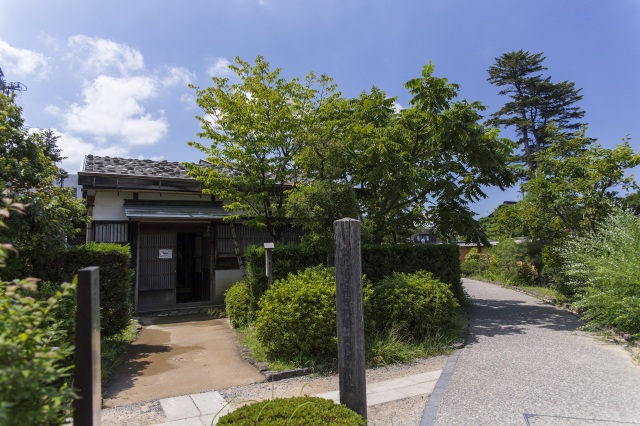
Oyama Jinja Shrine
The "Shinmon" gate, which shows the Guillaman, is stunningly beautiful!
The shrine that enshrines Maeda Toshiie was moved to the present location in 1873. The main gate is a peculiar mix of traditional Japanese, Chinese, and European religious architectural elements. This gate, which was designated as Japan's important cultural assets, was completed in 1875.
One of the highlights of Oyama Shrine is the garden in round-the-pond style with an artificial island and bridge in the images of old musical instruments, such as the biwa (Japanese short-necked fretted lute).
It is illuminated from after sunset until 22:00 at night, and the way it floats in the light creates a fantastic atmosphere. Located between Kenrokuen Garden and Kanazawa Castle and the Nagamachi District and downtown area, it is an easy stopover during sightseeing.
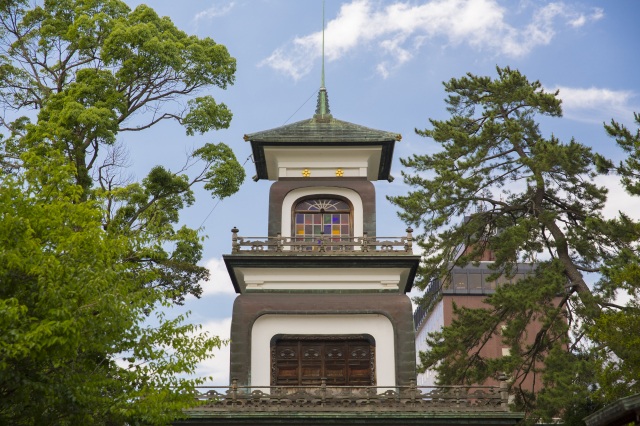
Kanazawa Castle Park
One of Kanazawa’s key historic landmarks
Once the home of the Maeda family, who governed the Kaga Domain – present day Ishikawa and Toyama – for over 280 years, Kanazawa Castle is an essential part of the city’s history.
Many features of the castle including the original castle tower were destroyed in two major fires over its long history, and many of them have been rebuilt. Two of its longest lasting features are the Ishikawa-mon Gate, which was rebuilt in 1788, and the Sanjikken Nagaya which was rebuilt in 1858. Both of them have been designated as important cultural assets.
During the time of the Maeda family, Kanazawa Castle was surrounded by moats and had a fort function with loopholes for matchlocks on the outer wall in order to keep it secure from enemies. The beautiful white tiles that grace the roof are weathered lead and the walls made of white mortar with flat tiles attached to it. The stone walls vary in type throughout the castle and it is apparent that many of them were built in separate periods, with the oldest dating back more than 400 years ago.
Prior to Kanazawa Castle and its park’s restoration, it was used for many different purposes. For a time, it was used as base for the Japanese army and then a campus for Kanazawa University before being designated a National Historic Site in 2008.
Hishi Yagura, Gojikken Nagaya, and Hashizume-mon Tsuzuki Yagura (turret and storehouse)
These three stunning features are reproductions of original aspects of the park from over 125 years ago. Hishiyagura is a diamond-shaped turret, Gojikken Nagaya a 90-yard-long warehouse, and Hashizumemon Tsuzuki Yagura a turret designed to protect a nearby gate. Constructed through traditional methods, they offer a glimpse into Kanazawa’s past.
Gyokusen-inmaru Garden
In 1634, the third lord of the Maeda family started to construct the garden. Although it was destroyed at the end of the feudal period, the garden was reconstructed in 2015. If you visit the garden after sunset on Saturdays and designated dates, you can enjoy a captivating lights show.
